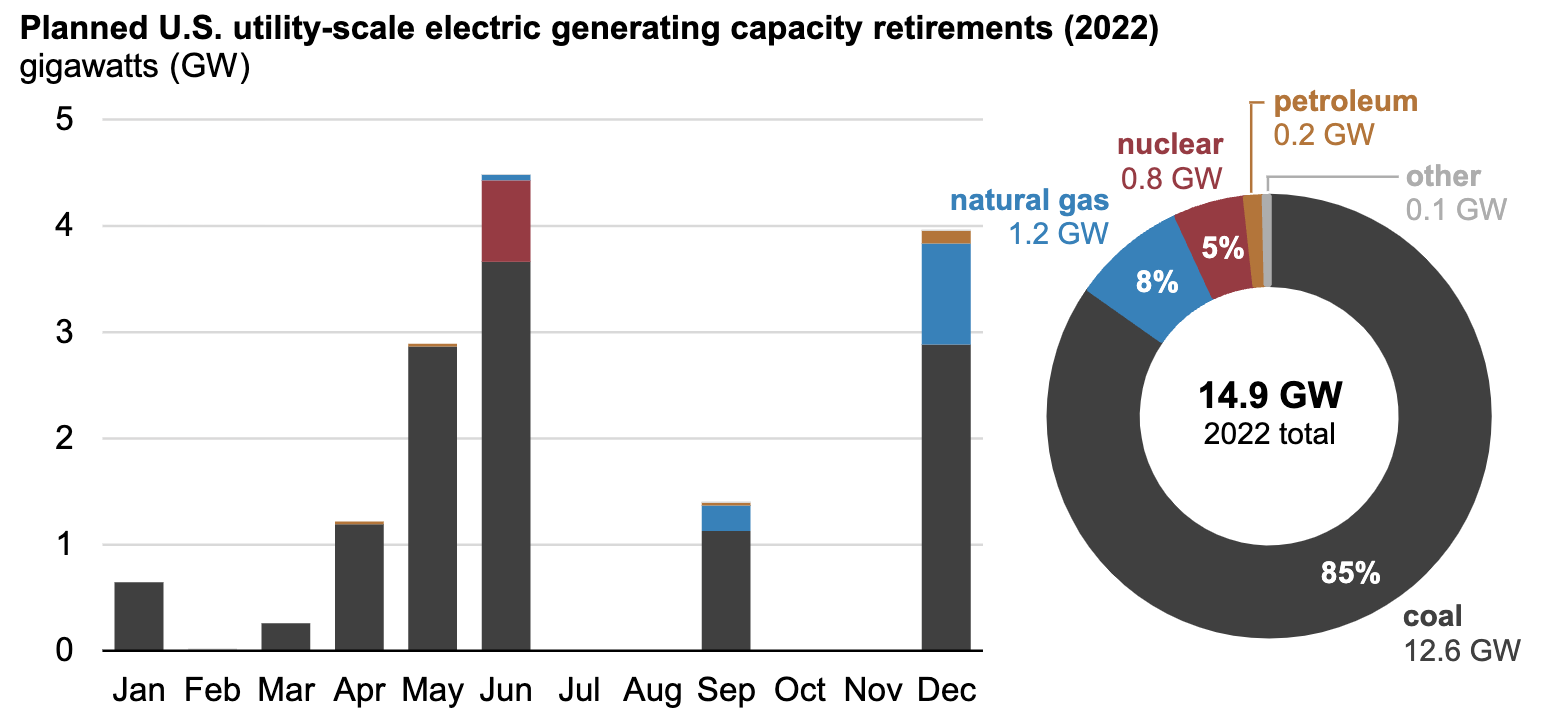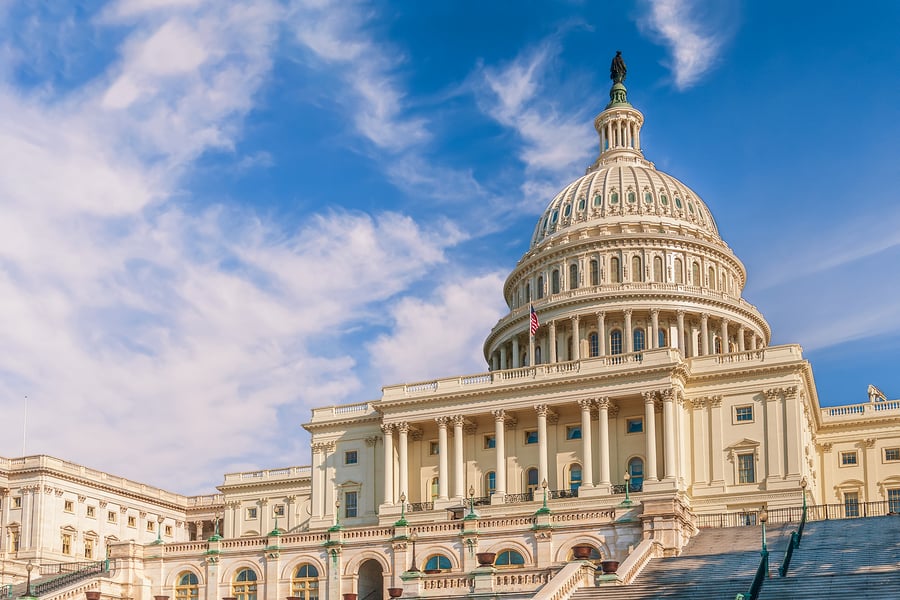Biden’s War On Coal Sends American Energy To China
Together, China and India are planning to increase their domestic coal production by a total of 700 million tons per year. That increase is about 100 million tons more than the total coal production expected in the United States this year of 600 million tons. U.S. coal production today is about half of its high in 2008 of 1.17 billion tons. In 2021, however, coal production increased due to increased demand from rising natural gas prices and increased exports. U.S. coal exports increased 23 percent last year, with the largest buyers ironically being India and China, together representing a third of U.S. coal exports. U.S. coal exports to China skyrocketed from roughly 1.8 million tons in 2020 to 12.8 million tons in 2021—an increase of 616 percent. U.S. coal is being shipped overseas rather than to U.S. electric plants because of the negativity around the fuel due to its carbon emissions and because of the federal government announcements against its use.
Biden’s War on Coal
At the COP26 climate conference in Glasgow, Scotland, climate envoy John F. Kerry declared that the Biden administration plans to put the coal industry out of business within eight years. “By 2030 in the United States, we won’t have coal. We will not have coal plants,” Kerry said.
Biden’s forced transition to renewable energy will result in blackouts this summer because of the early shuttering of fossil-fuel plants—particularly coal—that are needed to meet increased summer electricity demand. Some of the coal plants that regulators assumed would keep running for another year or two are instead coming offline because plant operators are choosing to shutter them rather than invest in upgrades for coal plants that Biden won’t allow to operate in the coming years. When the government announces that it intends to drive an industry out of existence, companies will not invest in it. Because a renewable-energy infrastructure currently does not exist to replace it, the result will be shortages and blackouts.
According to the Energy Information Administration, the shuttering of coal-fired electric plants will make up 85 percent of all electric-generation capacity retirements this year, taking 12.6 gigawatts offline. According to NERC’s 2022 Summer Reliability Assessment, the remaining coal-fired plants are “having difficulty obtaining fuel,” because of “mine closures, rail shipping limitations, and increased coal exports” — further reducing the nation’s ability to generate power this summer. The result will be not only blackouts but also skyrocketing energy prices. The Federal Energy Regulatory Commission in its Summer Assessment indicates that electricity prices could be 77 percent to 233 percent higher than last summer’s power prices. That could dwarf the increase in gasoline prices that has taken place since Biden took office.

Biden in his usual late response will not be prepared. He could make provisions to keep the coal plants on stand-by as Germany is doing, but that means his staff must acknowledge the problem and alert him to possible solutions. His only answer so far is to import more solar panels from Chinese manufacturers in Asia, which he announced on June 6. Biden also indicated he would invoke the Defense Production Act to supposedly benefit U.S. solar panel manufacturers, although they have called his efforts “a pittance” and do not believe it will help much. Essentially, President Biden’s response to energy shortfalls in the United States is more solar panels.
Big Bend Power Station
The Big Bend power station in Florida could not get all of its needed deliveries of coal, and its, owner, Tampa Electric, who had to curtail operations at the plant, blamed the railroad for insufficient coal shipments. According to the railroad, CSX, the issue is intermittent supply from the Sugar Camp mine in Illinois, which halted production from August 2021 to February 2022 because of a fire and has since resumed production at only 50 percent capacity. According to CSX, trains have encountered numerous instances where an arriving empty train is forced to wait extended durations because the mine is out of coal. The United States is not short of coal – and in fact, has the world’s largest proven reserves—but after years of government assaults against U.S. coal production and consumption, many mines have closed.
While the freight rail industry has experienced shipping shortfalls in the last year, they are largely outcomes of supply chain issues. Over the past two years, American railroads have set records at various points for volume levels of grain, chemicals and intermodal containers carrying consumer goods. In the latest American Society of Civil Engineers report card, U.S. freight rail is the top performing infrastructure and is the world’s most technologically advanced and energy-efficient.
While NERC believes the rail industry is causing some of the shipment problems, shipping by rail rather than truck reduces greenhouse gas emissions by 75 percent. The 1980 Staggers Act, which largely deregulated freight rail’s economic activities, resulted in an improved industry with doubling of goods shipped by rail, plummeting rates that shippers pay (it would have cost them $70 billion more to send the same freight via truck), and rail safety and environmental advancements, in part from rail infrastructure investment of $760 billion.
China and India Continue with Coal Deployment
In April, China announced it will increase coal output by 300 million tons this year, and, India, last month, indicated it plans to increase domestic coal production by more than 400 million tons over the next two years. Adding the 700 million tons of new coal that China and India will be mining to the amount they are now producing leads to China producing about 4.4 billion tons of coal per year and India producing about 1.2 billion tons. Together, they will be producing 5.6 billion tons of coal, which is more than 9 times the amount of coal that will be mined in the United States this year. The incremental coal production in India and China is exceeding whatever coal-fired generation capacity was retired in the United States and Europe. The end result of U.S. and European actions is an increase in the cost of energy for their citizens since policymakers no longer allow markets to work economically.
In order for India to up its coal production, the government had to provide “special dispensation” to the Ministry of Coal which allows the agency to relax environmental controls and public consultations so mines can produce more coal. The action was a result of the government receiving “a request from the Ministry of Coal ‘stating that there is huge pressure on domestic coal supply in the country and all efforts are being made to meet the demand of coal for all sectors.’”
Conclusion
Energy choices should reflect consumers’ desires, which is not the case under the Biden administration, where they are literally picking winners and losers. America’s growing energy needs demand fuel from all domestic sources, but Biden is holding resources hostage and increasing regulatory activity making it harder to produce energy. The closures of coal plants and coal mines are part of the administration’s plan to “decarbonize” U.S. power generation. The problem is that renewables are not yet ready to make up for lost coal capacity, despite their increasing generation levels, which now make up 20 percent of U.S. electricity generation, when hydroelectric is included.
President Biden has been caught short on a number of pending issues such as baby formula, and the same result can occur with electricity blackouts if he just ignores the problem. Other leaders are responding. Germany has put idled coal plants on standby and India is allowing its miners to produce more coal. Even Japan is using more coal for electricity generation. Even if blackouts do not occur, the projected shortages will result in higher prices as FERC has indicated. Americans are getting hit from all sides with massive energy price hikes, with much of it purposeful based upon policy choices in Washington, D.C.
*This article was adapted from content originally published by the Institute for Energy Research.


